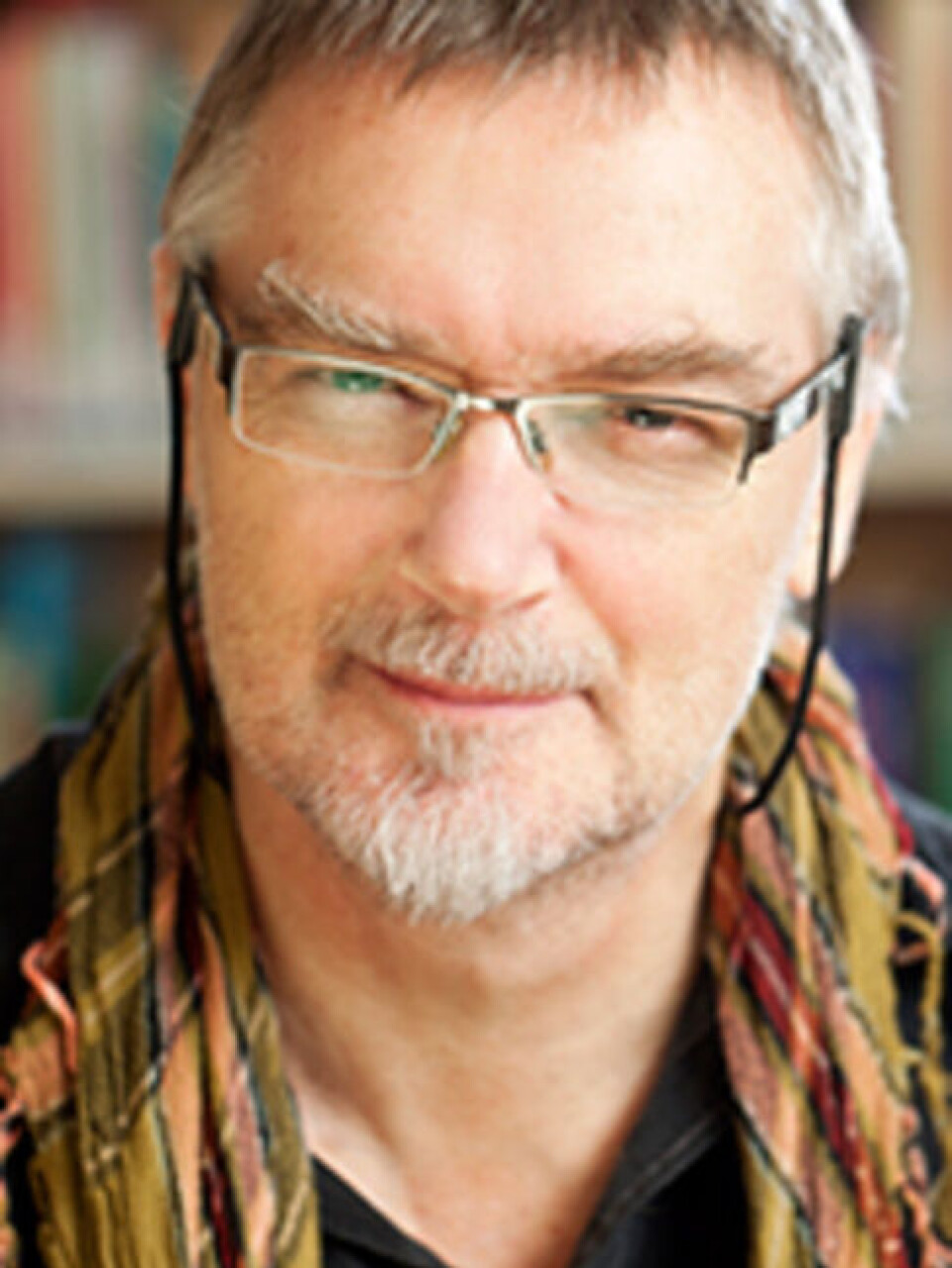THIS ARTICLE/PRESS RELEASE IS PAID FOR AND PRESENTED BY Oslo Metropolitan University - read more

Finding community in extremism
The world seems more and more polarised and youth sometimes feel like strangers in their own countries. In the face of real and perceived injustices, some find community in extremism.
Viggo Vestel is a social anthropologist at Oslo Metropolitan University (OsloMet). He and the Dialogue About Radicalisation and Equality project (DARE) are studying how youth become radicalised and what can be done to change their course.
They are primarily interested in far-right and Islamic extremism. Unlike other studies on radicalisation though, DARE’s focus is not on the individuals who commit acts of terrorism but on the environment and situations that create opportunities to become radicalised.

Provides a place where they feel listened to
“Youths have a certain sensibility and sensitivity for what is going on in the world. They tend to exaggerate and create new identities around sub-cultures, including political positions," Vestel says.
These sub-cultures are heavily influenced by friends and the overall milieu around them. Youths may get into snowboarding, or hip-hop, or black metal, but they can also get drawn into extremist groups.
Their motives can be complex. One youth told Vestel he joined a neo-Nazi group his brother introduced him to, not because he agreed with the ideology, but because they took him to cool parties and he liked the clothes.
At its core, one of the main reasons youths are drawn to extremist groups is that they provide a place where they can feel listened to. There are injustices everywhere and many youths who join these groups see themselves and the extremists as trying to ‘improve’ the world in some way.
Method to find out how to reverse radicalisation
Vestel's research investigates the issue of extremism more broadly than much of the other research.
Instead of only focusing on the rare extremist who goes all the way to committing acts of terrorism, DARE looks at the people who join the groups but stop before violence.
A major part of this is understanding their environmental influences: their social interactions, physical conditions, their feelings and the extremist ideas and politics they are exposed to.
This environmental approach is key for figuring out how to reverse radicalisation.
The first challenge is to gain access and meet people willing to talk. Vestel says many people in these groups have a strong distrust of journalists and researchers, so getting them to talk is quite difficult.
So, to reach people, Vestel keeps an eye on media outlets to find groups and individuals who are in this field and reach out to see if they are willing to talk.
A common characteristic of members of these groups is that they feel silenced by the traditional media, so it is possible to find individuals who are excited to have someone to share their stories and concerns with.
The path to radicalisation
The path to radicalisation often starts with concrete grievances, real or perceived reasons to be angry about the state of the world.
For right wing groups, radicalisation can begin as a feeling of being threatened by immigrants, of feeling like aliens in their own home because of all the new people. These feelings can manifest as an opposition to changing norms and values, especially gender roles.
Many of them also hold beliefs that inequality is the natural state of the world and oppose efforts to break down these barriers, even if they also heavily criticise what they see as the ‘elite’.
“Globally, and here in Norway, so many of these groups are developing in the same direction of nationalism, re-immigration (the idea that people should go back to their home countries), and a fear of Islam,” Vestel says.
Racism and discrimination
Muslim youth often feel more pervasive injustices. Many of them experience racism, harassment, and discrimination.
In addition, they point to world events, like wars and invasions by Western powers in Muslim-dominated areas, the Israel-Palestine conflict, the injustices in the US driven prisons, and the situation of the Uighurs and Rohingyas.
Many of the youth Vestel works with report being stopped and surveilled by police for no reason.
The 2001 racially motivated murder of Benjamin Hermansen by a Nazi group had a profound effect on Norway’s Muslim community.
These experiences, the big politics, and the overall negativity they are met with lead many youths to try to change the society they live in and open them up to extremism.
Recruiters are always waiting to seize on these grievances and offer youth a path to more extreme views.
They consider young people between the ages of 12 and 30 to be prime targets for recruitment.
The internet allows youths and recruiters to connect across the world and draw people to join online groups or even travel around the world to join terrorist organisations.
Turning it around
“Many people have attitudes, very few act,” Vestel says.
People can have extreme attitudes and views and not be willing to go through with them.
Vestel says that while many youths express these ideas or even join extremist groups, nearly all stop short of actually committing acts of violence or terrorism.
A key component of his research is to figure out what determines the line where people say "No, this is too extreme for me" and stop.
DARE has found that feeling listened to is a major part of reversing the radicalisation process. Having positive influences and experiences with family, friends, and authorities are important.
Vestel cites as an example how important it was to young Muslims when then-prime minister Erna Solberg publicly admitted mistakes of the Norwegian government and warned against creating laws that did to Muslims what the Nazis did to Jews.
Family and changing social situations also play a role. Many people on the path to radicalisation change course when they have a spouse and children to take care of.
The responsibility for a family may make them feel like their radicalisation is going too far. This gets to a more fundamental driving factor: loneliness.
"One informant from Norway told us he was lonely, did not have many friends, was looking for some kind of community and he got the idea that the Nordic Resistance Movement (a self-proclaimed neo-Nazi group) was a good community that could provide a sense of identity and taking care of each other. It wasn’t necessarily the ideology that drew him in, but the community,” Vestel says.
Project outreach
Working with these youths and making them feel heard is a major part of reversing radicalisation.
Developing dialogue and taking their concerns seriously, not their radical ideas but their experiences and emotions, is essential.
Vestel and his team collaborate with a group of representatives from municipalities that have problems with young extremists.
They meet and discuss their findings, develop projects, and create arenas where youths can voice their political concerns and have discussions. Through their research and these meetings, they develop tools to counteract violent radicalisation.
DARE (Dialogue about Radicalisation and Equality) is funded by HORIZON 2020 and includes 13 other countries. The project investigates how young people aged between 12 and 30 respond to messages and agents of radicalisation.
As it wraps up, the project will be developing policy briefs with recommendations for ways policymakers can combat radicalisation and plans for new avenues of research.

This article/press release is paid for and presented by OsloMet
This content is created by Oslo Metropolitan University's communication staff, who use this platform to communicate science and share results from research with the public. Oslo Metropolitan University is one of more than 80 owners of ScienceNorway.no. Read more here.
See more content from OsloMet:
-
"Norwegians practice a friendship version of a ‘one-night stand'"
-
"We need to talk about how we assess teacher students"
-
Cannabis use in Norway has increased: “Not everyone needs moral lectures or worried looks"
-
Many children with ADHD do not thrive at school
-
An out-of-control race: Why we fear artificial intelligence
-
One in four seniors feels digitally discriminated against




































